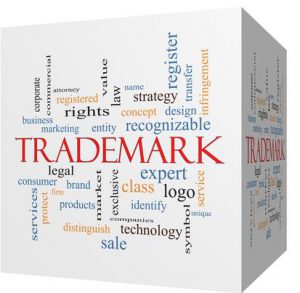Who may make an application for removal? – Trademark Removal
Who may make an application for removal – “person aggrieved”:

An application for removal of a registered trademark is to be made in the prescribed manner by any “Person aggrieved”.
The term “person aggrieved”, though not defined in the act, has been liberally construed in several cases. The classic case in this respect is Powell’s TM where it was held that ‘I should be very unwilling unduly to limit the construction to be placed upon these words; because although they were no doubt inserted to prevent officious interference by those who had interest at all in the register is correct, and to exclude a mere common informer, it is undoubtedly of public interest that they should not be unduly limited, in as much as it is a public mischief that there should remain upon the register a mark which ought not to be there, and by which many persons may be affected, who, nevertheless, would not be willing to enter upon the risk and expense of litigation. Wherever it can be shown, as here, that the applicant is in the same trade as the person who has registered the trademark, and wherever the trademark, if remaining on the register, would, or might, limit the legal rights of the applicant, so that by reason of the existence of the entry on the register he could not lawfully do that which, but for the existence of the mark upon the register he could lawfully do, it appears to me he has a locus standi to be heard as a person aggrieved.
In Riviera’s & Co. T.M, it was held that it must be a legal grievance; it must not be a stet pro ratione volutes; the applicant must not come merely saying “I do not like this thing to be done; it must be shown that it tends to his injury or to his damage in the legal sense of the word.
Person aggrieved- Distinction between the terms used in section 47 and 57 (non-user):

In Hardie Trading Ltd. v. Addisons Paint & Chemicals Ltd., the Supreme Court held as follows:
In our opinion, the phrase “persons aggrieved” for the purposes of removal on the ground of non-use under section 46 has a different connotation from the phrase used in section 56 for canceling or expunging or varying an entry wrongly made or remaining in the register.
In the latter case, the locus standi would be ascertained liberally, since it would not only be against the interest of other person carrying on the same trade but also in the interest of the public to have such wrongful entry removed. It was in this sense that the House of Lords defined “person aggrieved” in the matter of Powell’s trademark.
“Although they were no doubt inserted to prevent officious interference by those who had no interest at all in the register is correct and to exclude a mere common informer, it is undoubtedly of public interest that they should not be unduly limited, inasmuch as it is a public mischief that there should remain upon the register a mark which ought not to be there, and by which many persons may be affected, who, nevertheless, would not be willing to enter upon the risk and expense of litigation.

Whenever it can be shown, as here, that the applicant is in the same trade as the person who has registered in the trademark, and wherever the trademark, if remaining of the register, would, or might, limit the legal rights of the applicant, so that by reason of the existence of the entry on the register he could not lawfully do that which, but for the existence of the mark upon the register, he could lawfully do, it appears to me he has a locus standi to be heard as a person aggrieved.
But if the ground for rectification is merely based on non-user i.e. under section 46 of the act, that is not really on account of any public mischief by way of an incorrect entry. The non-user does not by itself render the entry incorrect but it gives a right to a person whose interest is affected to apply for its removal. An applicant must, therefore, show that:

“In some possible way he may be damaged or injured if the trademark is allowed to stand; and by possible I mean possible in a practical sense, and not merely in a fantastic view. All cases of this kind, where the original registration is not illegal or improper, ought to be considered as questions of common sense, to a certain extent, at any rate; and I think the applicants ought to show something approaching a sufficient or proper reason for applying to have the trademark expunged. It certainly is not sufficient reason that they are at loggerheads with the respondents or desire in some way to injure them.
The expression “by any proprietor” in section 47 should not be restricted to the user by a proprietor or registered user who should also include bona fide or authorized user. The legislature did not intend registered proprietor to be deprived of their property at the instance of a user whose use is unregistered. The expression, therefore, should not be restricted to a user by the proprietor himself or any registered user but should also take into account bona fide authorized user.
Three months before the date of the application:

Under the trade and merchandise marks act, 1958, section 46(1) and (b) has prescribed the period as “one month before the date of the application”, based on similar provisions in section 26 of the U.K. Act 1938. Referring to the law in U.K. the object of the one month period was explained by the Goschen committee:
The object of the words “one month before the application” in both clauses (a) and (b) of sub-section (1) appears to be to enable a prospective applicant for rectification to negotiate with the registered proprietor with a view to an agreed settlement before filing his application, without thereby running the risk of the registered proprietor commencing to use immediately after the notice is given and so possibly defeating such an application.
Under the present trademarks act, 1999, section 47(1)(a) and (1)(b), the period has been increased from one month to three months. See also corresponding provision 46(1) proviso of the UK trademarks 1994. The UK act expressly provides that “commencement or resumption of use after the expiry of the five year period but within the period of three months before the making of the application shall be disregarded unless preparations for the commencement or resumption began before the proprietor became aware that the application might be made. Similar is the law under the article 12 of the European Council directive (1988) to approximate the laws of the member states relating to trademarks.
Thus the purpose of this provision of three months is to prevent the owner of the unused mark who realizes that an application for removal is about to be filed from frustrating it by starting or resuming use. Under the law, therefore the use started or resumed during the period of three months before the filing of an application will be disregarded where preparation for the commencement or resumption of the use occurred only after the proprietor became aware that the application for renewal may be filed.
The court while constructing a status takes into consideration the parliamentary intent in amending the provisions thereof. It seeks to enhance the period of a moratorium of use of the registered trademark from one month to three months so as to prevent speculative assignment. Thus a case of a speculative assignment is specifically required to be made out. Such an application may be maintainable in terms of section 56 of the act, but strictly not in terms of section 46(1)(b) thereof and that too in the absence of the originally registered proprietor.
The prescribed period for non-use is five years. The purpose of prescribing three months period in section 47(1)(a) and 47(1)(b) is to encourage negotiations between the trademark proprietor and the applicant for revocation. If the proprietor commenced use of the mark only when he found out about the prospective application such use would be disregarded if the application were filed within three months.
In Kerly’s law of trademarks, the two types of situation are discussed; the first is where the applicant for revocation suspects that there has been no use of the mark in relation to any of the goods or services for which it is registered. In that type of situation, the applicant wants to choose a five year period which will ensure success, and not trigger any use which might complicate the situation. The second type of situation is where the mark has been used in relation to particular goods or services, but the applicant for revocation is interested in cutting down the specification of goods or services to remove or reduce the risk of conflict. Again, the applicant wishes to choose a five year period which will ensure success. In this second type of situation, there is less risk that the proprietor will be able to extend his use so as to cover the whole specification of goods or services. In this sense, the choice of five year period is less constrained.
An object of provision for removal of marks for non-use:

Registration of a trademark gives the proprietor exclusive right to use the mark in connection with the goods in respect of which it is registered and if there is an invasion of this right by any other person he can protect his trademark by an action for infringement in which he can obtain injunction, damages, on account of profits. In addition, he can also obtain remedies under the criminal law.
As the registration of a trademark confers such valuable rights upon the registered proprietor thereof, a person cannot be permitted to register a trademark when he has not used it in relation to the goods or services in respect of which it is sought to be registered or does not intend to use it in relation to such goods or services.